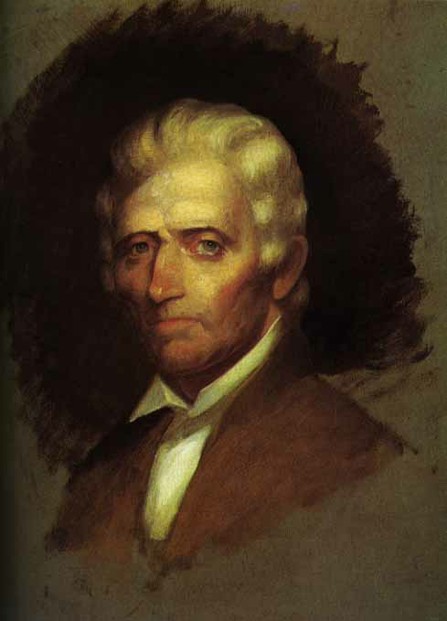Andreasen, M.L.; and Eshbaugh, W.H. 1973. “Solidago albopilosa Braun, a Little Known Goldenrod from Kentucky.” Castanea 38:117-132.
Barnes, Thomas G., and S. Wilson Francis. 2004. Wildflowers and Ferns of Kentucky. Lexington KY: The University Press of Kentucky.
Beaudry, J.R. 1959. “Solidago albopilosa and S. flexicaulis.” Castanea 24:53-54.
Braun, Annette Frances. 1914. Evolution of the Color Pattern in the Microlepidopterous Genus Lithocolletis. Philadelphia PA: n.p.
- Available via Biodiversity Heritage Library at: http://biodiversitylibrary.org/page/38577585
Braun, E. Lucy. 1942. "A New Species and a New Variety of Solidago from Kentucky." Rhodora, Vol. 44, No. 517 (January): 1 - 4.
- Available via Biodiversity Heritage Library at: http://biodiversitylibrary.org/page/608543
Esselman, E.J.; and Crawford, D.J. 1997. “Molecular and Morphological Evidence for the Origin of Solidago albopilosa (Asteraceae), a Rare Endemic of Kentucky.” Systematic Botany 22:245-257.
Floyd, Dr. Michael A. White-haired Goldenrod (Solidago albopilosa) 5-Year Review: Summary and Evaluation. Frankfort, KY: U.S. Fish and Wildlife Service, Southeast Region, Frankfort Ecological Services Field Office. Retrieved January 9, 2015.
- Available at: http://www.fws.gov/southeast/5yearReviews/5yearreviews/WhitehairedGoldenrod20090305%20.pdf
Pence, Valerie C. 11 June 2010. “Solidago albopilosa.” Center for Plant Conservation National Collection Plant Profile: CPC Number 4040. St. Louis, MO: Missouri Botanical Garden. Retrieved January 9, 2015.
- Available at: http://www.centerforplantconservation.org/collection/CPC_ViewProfile.asp?CPCNum=4040
Recce, Susan. 1987. "Endangered and Threatened Wildlife and Plants; Proposed Endangered Status for Solidago albopilosa (White-haired Goldenrod)." Federal Register, Vol. 52, No. 79 (April 24): 13798 - 13800.
- Available at: http://ecos.fws.gov/docs/federal_register/fr1252.pdf
Recce, Susan. 1988. "Endangered and Threatened Wildlife and Plants; Determination of Threatened Status for Solidago albopilosa (White-haired Goldenrod)." Federal Register, Vol. 53, No. 67 (April 7): 11612 - 11615.
- Available at: http://ecos.fws.gov/docs/federal_register/fr1412.pdf
Shea, Margaret. 28 September 1993. Recovery Plan for White-haired Goldenrod (Solidago albopilosa). Atlanta, GA: Southeast Region, U.S. Fish and Wildlife Service. Retrieved January 9, 2015.
- Available at: http://www.fws.gov/ecos/ajax/docs/recovery_plan/930928.pdf
“Solidago albopilosa.” Compilation. Retrieved January 9, 2015.
- Available via JSTOR at: http://plants.jstor.org/compilation/solidago.albopilosa
“Solidago albopilosa.” uBio: Universal Biological Indexer and Organizer NamebankID 2657727. Woods Hole, MA: Marine Biological Laboratory Woods Hole Oceanographic Institute. Retrieved January 9, 2015.
- Available at: http://www.ubio.org/browser/details.php?namebankID=2657727
“Solidago albopilosa E.L. Braun.” GRIN Taxonomy for Plants: Nomen number 319855. Beltsville, MD: United States Department of Agriculture, Agricultural Research Service, Germplasm Resources Information Network. Retrieved January 9, 2015.
- Available at: http://www.ars-grin.gov/cgi-bin/npgs/html/taxon.pl?319855
“Solidago albopilosa E.L. Braun.” ITIS Report: Taxonomic Serial No. 36227. Reston, VA: Integrated Taxonomic Information System. Retrieved January 9, 2015.
- Available at: http://www.itis.gov/servlet/SingleRpt/SingleRpt?search_topic=TSN&search_value=36227&search_kingdom=every&search_span=exactly_for&categories=All&source=html&search_credRating=All
“Solidago albopilosa – E.L. Braun.” NatureServe Explorer. Arlington, VA. Retrieved January 9, 2015.
- Available at: http://explorer.natureserve.org/servlet/NatureServe?searchName=Solidago+albopilosa
“Solidago albopilosa E.L. Braun.” Tropicos.org. Saint Louis, MO: Missouri Botanical Garden. Retrieved January 9, 2015.
- Available at: http://www.tropicos.org/name/2711069
“Solidago albopilosa E.L. Braun whitehair goldenrod.” USDA: Plants > Plant Profile. United States Department of Agriculture Natural Resources Conservation Service. January 9, 2015.
- Available at: http://plants.usda.gov/core/profile?symbol=SOAL3
“Solidago albopilosa, white-haired goldenrod.” Forest Service: Wildflowers > Rare Plants > Profiles > Threatened, Endangered, and Proposed (TEP). Retrieved January 9, 2015.
- Available at: http://www.fs.fed.us/wildflowers/Rare_Plants/profiles/TEP/solidago_albopilosa/index.shtml
“Solidago albopilosa (White-Haired Goldenrod).” ZipcodeZoo: Species Identifier 63260. Retrieved January 8, 2015.
- Available at: http://zipcodezoo.com/Plants/S/Solidago_albopilosa/
U.S. Fish and Wildlife Service. 1993. White-haired Goldenrod Recovery Plan. Atlanta GA: U.S. Fish and Wildlife Service.
- Available at: http://ecos.fws.gov/docs/recovery_plan/930928.pdf
Walck, J.L.; Baskin, J.M.; and Baskin, C.C. 1996. “Sandstone Rockhouses of the Eastern United States, with Particular Reference to the Ecology and Evolution of the Endemic Plant Taxa.” The Botanical Review 62:311-352.
White, Deborah L.; and Drozda, Nicholas C. June 2006. “Status of Solidago albopilosa Braun (White-haired Goldenrod) [Asteraceae], a Kentucky Endemic. Castanea 71(2):124-128.
- Available via JSTOR at: http://www.jstor.org/discover/10.2307/4034269?sid=21105034382741&uid=3739936&uid=2&uid=4&uid=3739256
“Whitehair Goldenrod (Solidago albopilosa).” All Things Plants: Goldenrods Database. Retrieved January 9, 2015.
- Available at: https://allthingsplants.com/plants/view/202132/Whitehair-Goldenrod-Solidago-albopilosa/
“White-Haired Goldenrod (Solidago albopilosa).” U.S. Fish & Wildlife Service Environmental Conservation Online System. Retrieved January 9, 2015.
- Available at: http://ecos.fws.gov/speciesProfile/profile/speciesProfile.action?spcode=Q21T

















 Are Hawaiian Huakai Po Nightmarchers Avenging Halloween Thursday?on 10/02/2024
Are Hawaiian Huakai Po Nightmarchers Avenging Halloween Thursday?on 10/02/2024
 Mailing Addresses for 2023 Form 4868 Extending 1040 and 1040SR April 15, 2024, Due Dateon 04/15/2024
Mailing Addresses for 2023 Form 4868 Extending 1040 and 1040SR April 15, 2024, Due Dateon 04/15/2024
 Mailing Addresses for 2023 Forms 1040 and 1040SR Filed in 2024on 04/15/2024
Mailing Addresses for 2023 Forms 1040 and 1040SR Filed in 2024on 04/15/2024
 Mailing Addresses for 2022 Form 4868 Extending 1040 and 1040SR April 18, 2023, Due Dateon 04/13/2023
Mailing Addresses for 2022 Form 4868 Extending 1040 and 1040SR April 18, 2023, Due Dateon 04/13/2023



Comments
paperfacets, The Red River Gorge is gorgeous, as is the forest in which it is located, Daniel Boone National Forest. I hope that you are able to visit there some day soon: you will not be disappointed.
East coast plants are new to me. I am only familiar with the dry CA terrain. I so much want to see the area and Red River Gorge.